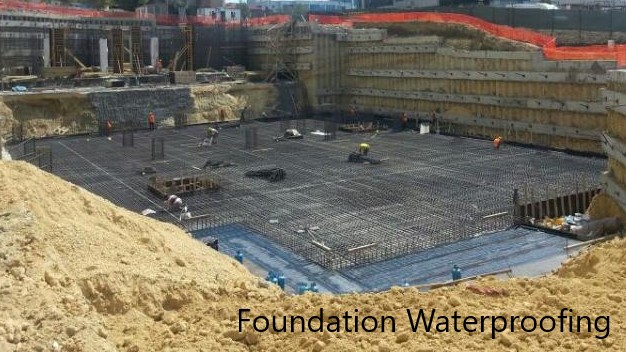Construction sites are dynamic and often bustling with activity. The operation of heavy machinery, electrical installations, and the presence of workers in confined spaces present several potential hazards. Ensuring construction equipment safety is not just a legal requirement; it’s a moral obligation to protect the lives and well-being of those involved in the construction industry.
Importance of Construction Equipment Safety
Construction equipment safety is of paramount importance in the construction industry for several reasons:
Protecting Workers
The construction industry is notorious for being one of the most dangerous sectors to work in. Heavy machinery, power tools, and the ever-present risk of falling objects pose significant threats to workers. Prioritizing safety measures is essential to protect the lives and health of those on construction sites.
Reducing Accidents
Accidents on construction sites can have catastrophic consequences. From minor injuries to fatalities, the risks are real. Adhering to safety protocols and guidelines helps reduce the number of accidents. This not only saves lives but also minimizes the financial and reputational costs associated with accidents.
Ensuring Compliance
To avoid legal complications and fines, construction companies must adhere to strict safety regulations and industry standards. Non-compliance can lead to costly legal battles and damage the reputation of the construction company.
Common Construction Equipment Hazards
Understanding the specific hazards that construction equipment poses is essential for mitigating risks:
Heavy Machinery Risks
The operation of heavy machinery such as cranes, bulldozers, and excavators requires skill and training. Inadequate training can lead to accidents, including rollovers, collisions, and equipment malfunctions.
Electrical Hazards
Electrical equipment is commonly used on construction sites. Faulty wiring or inadequate grounding can lead to electrical shocks or fires. Ensuring that all electrical systems are properly installed and maintained is vital.
Confined Spaces
Many construction tasks, such as plumbing or welding, require workers to enter confined spaces. These areas can be hazardous due to poor ventilation, limited mobility, and the potential for toxic gases or flammable materials. Proper training and equipment for confined space entry are essential.
Falls and Elevated Surfaces
Falls from elevated platforms, scaffolding, or roofs are one of the leading causes of injuries in construction. Guardrails, safety nets, and personal fall arrest systems are crucial safety measures to prevent falls.

Image Source: Internet
Safety Measures for Construction Equipment
To enhance construction equipment safety, the following measures should be taken:
Proper Training
All personnel operating construction equipment should undergo thorough training. Training should cover equipment operation, safety protocols, emergency procedures, and communication on the site. Workers need to be competent and aware of potential hazards.
Routine Maintenance
Regular maintenance of equipment is essential to ensure that it operates safely and efficiently. A well-maintained machine is less likely to malfunction, reducing the risk of accidents.
Personal Protective Equipment (PPE)
Workers should be provided with appropriate PPE to safeguard against potential hazards. This includes hard hats, high-visibility vests, steel-toed boots, gloves, and safety goggles. PPE acts as the last line of defense against accidents.
Site Inspections
Regular inspections of the construction site are crucial to identify potential safety hazards and rectify them promptly. Supervisors and safety officers should conduct inspections, looking for issues like uneven surfaces, loose debris, or improperly stored materials.
Construction Equipment Safety Tips
Operating Equipment Safely
Operators must be vigilant when using construction equipment. They should follow safety guidelines, adhere to equipment-specific protocols, and conduct pre-operational checks to ensure everything is in working order.
Communication on the Site
Clear communication among workers is vital to prevent accidents and injuries. Workers should use radios, signals, or other communication methods to coordinate movements, especially when operating heavy machinery.
Emergency Protocols
Establishing emergency response procedures ensures swift action in case of accidents or hazards. This includes knowing how to shut down equipment, administering first aid, and contacting emergency services promptly.
Regulations and Compliance
Ensuring construction equipment safety requires strict compliance with safety regulations and industry standards. These regulations and standards are in place to protect the well-being of workers, reduce accidents, and create a safe working environment. Two primary sources of construction safety regulations are the Occupational Safety and Health Administration (OSHA) and industry-specific standards.
Occupational Safety and Health Administration (OSHA)
- Fall Protection: OSHA mandates that employers must provide fall protection systems for workers engaged in construction activities at heights of six feet or more. This includes guardrails, safety nets, and personal fall arrest systems.
- Electrical Safety: OSHA provides guidelines for electrical safety on construction sites, including the use of ground-fault circuit interrupters (GFCIs) and safe work practices for electrical equipment.
- Hazard Communication: OSHA’s Hazard Communication Standard ensures that employees are informed about hazardous chemicals present on the worksite. Proper labeling, Safety Data Sheets (SDS), and employee training are essential components.
- Personal Protective Equipment (PPE): OSHA regulations require employers to assess workplace hazards and provide appropriate PPE to protect workers. This includes hard hats, safety glasses, hearing protection, and respiratory protection as necessary.
- Confined Space Entry: OSHA has strict rules for working in confined spaces, which are often encountered in construction projects. Employers must have confined space entry programs, rescue procedures, and employee training in place.
Industry Standards
Apart from OSHA regulations, the construction industry itself has developed standards and best practices to enhance safety. These may vary depending on the type of construction, but some common industry standards include:
- American National Standards Institute (ANSI): ANSI develops standards for a wide range of equipment used in construction. These standards cover safety aspects, such as equipment design, operation, and maintenance.
- National Fire Protection Association (NFPA): NFPA provides standards related to electrical safety in construction. Compliance with NFPA standards helps prevent electrical hazards on construction sites.
- American Society of Safety Professionals (ASSP): ASSP offers resources and standards that focus on safety management and risk assessment in the construction industry. These standards help companies establish comprehensive safety programs.
- Construction Industry Institute (CII): CII publishes research and guidelines for best practices in the construction industry. Their resources cover safety management, project planning, and risk assessment.
- Construction Site Safety Management Systems: Many construction companies implement safety management systems based on recognized industry standards, ensuring that safety is integrated into all aspects of the construction process.
Compliance with these regulations and standards is not just a legal requirement but also a moral obligation to protect the well-being of construction workers. It’s essential for construction companies to stay updated with the latest regulations, conduct regular safety training, and consistently enforce safety measures on their construction sites to ensure full compliance.
Non-compliance can lead to severe legal consequences, fines, and even work stoppages, which can have a significant impact on a construction project’s timeline and budget.
Construction equipment safety is paramount in the construction industry, not only for legal compliance but also for the well-being of the workers and the success of construction projects. Prioritizing safety measures, proper training, adherence to guidelines, and a culture of safety on construction sites create a safer work environment for everyone involved.
FAQs
1. Why is construction equipment safety essential?
Construction equipment safety is crucial to protect workers, reduce accidents, and ensure compliance with regulations. It ultimately saves lives and safeguards the reputation of the construction company.
2. What are some common construction equipment hazards?
Common hazards include heavy machinery risks, electrical hazards, confined spaces, and falls from elevated surfaces. Identifying and mitigating these risks is critical.
3. How can construction equipment safety be improved?
Safety can be improved through proper training, routine maintenance, the use of personal protective equipment, and regular site inspections. A culture of safety and effective communication are also key elements in improving safety.
4. What role does OSHA play in construction equipment safety?
OSHA provides guidelines and regulations to promote safety in the construction industry. Compliance with OSHA standards is essential to avoid legal complications and maintain a safe work environment.
5. Why is it important for employers to prioritize construction equipment safety?
Employers play a crucial role in ensuring the safety of their workers. Prioritizing safety not only protects employees but also reduces the risk of legal complications and fines, which can be detrimental to the business.


